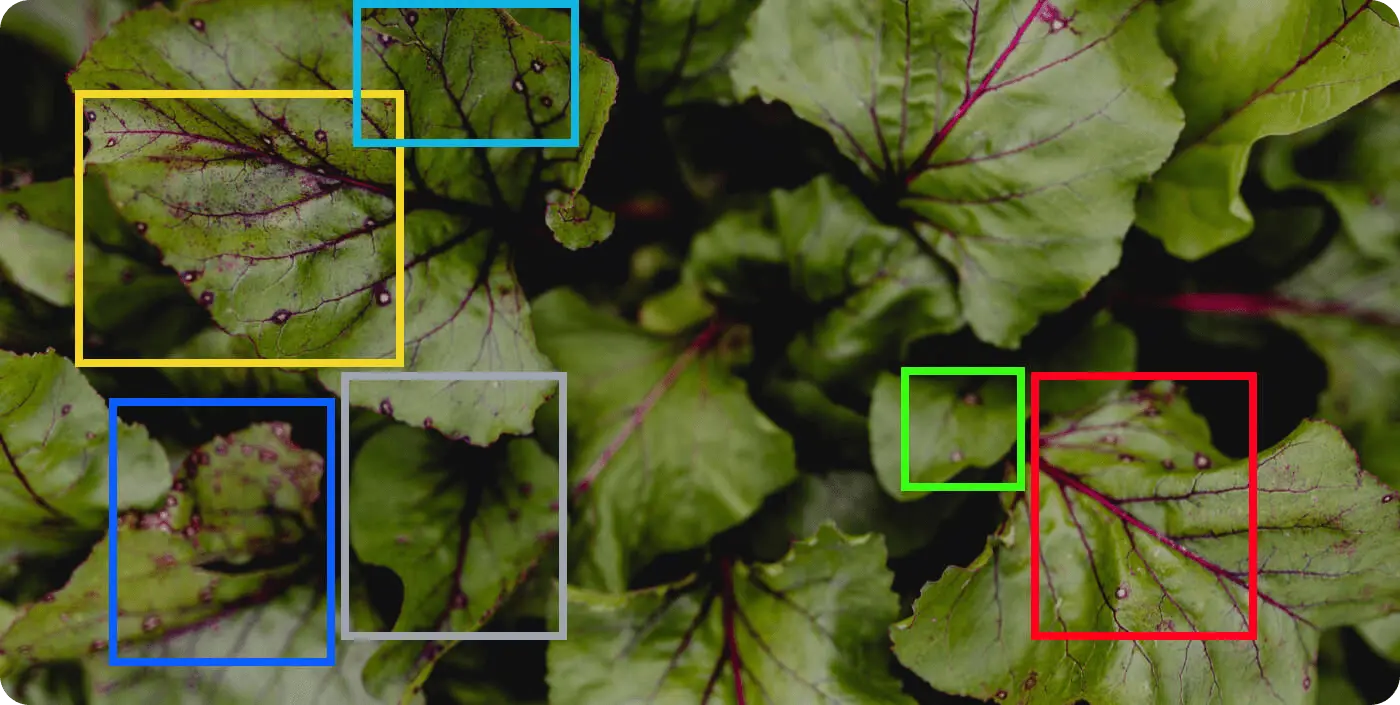Explore how Vision AI is revolutionizing agriculture: from precision farming and climate monitoring to an optimized use of resources to save costs.
_(1).avif)
Explore how Vision AI is revolutionizing agriculture: from precision farming and climate monitoring to an optimized use of resources to save costs.
_(1).avif)
Artificial Intelligence has multiple applications. Most industries could easily benefit from all the advantages this technology brings today. Let’s roll up our sleeves as we focus on one of the most crucial ones: agriculture.
It all hinges on the proper allocation of resources.
Machine learning algorithms analyze vast amounts of data collected from sensors, satellites, and drones to uncover patterns and connections. This allows an optimized use of resources such as water, fertilizers, and pesticides.
Monitoring and managing crops leads to multiple benefits, such as:

Weed identification is another area where AI benefits farmers.
This technology can distinguish between crops and weeds, facilitating targeted and efficient weed control without the need for widespread herbicide application.
The advantages not only apply to open fields, but also to greenhouse agriculture.
Artificial Intelligence Vision can be applied to monitor the health and well-being of livestock, detecting early signs of illness and ensuring prompt veterinary care.
In addition, this technology prevents thefts and unusual activities that can cause multiple other problems.
One other use of this technology is quality control. Algorithms can assess the quality of agricultural products, ensuring that only high-quality produce enters the supply chain. This translates directly into a reduction in waste and better customer satisfaction.
But this is not something new. Multiple reputed companies across multiple industries are already ahead of the curve.
The Head of Production Planning, Automation, and Digitization at Audi asserted that the integration of machine vision with AI resulted in a 30-50 percent reduction in labor costs associated with these inspections.
.webp)
Artificial Intelligence analyzes visual data related to weather patterns. This helps farmers make informed decisions about planting times and crop selection to adapt to changing climate conditions.
In terms of climate change and research, AI is already doing ‘the dirty work for us’, according to Dr. Anna Liljedahl. Just to elaborate on her professional case, she is using climate monitoring to do permafrost forecasts on a seasonal timescale in the Arctic.
Data-based decisions boost productivity and profitability.
AI enables the analysis of vast amounts of data, providing farmers with insights for better decision-making in multiple areas (such as: planting, harvesting, and overall farm management, to name a few).
Plus, the applications can be adapted to the needs of each specific case. Some users may be more interested in controlling pests while others may prefer more in-depth information about the soil.
On average, approximately 70% of all water consumed in the world goes to farming. And out that 70%, a whopping 40% is lost due to poor water management.
Farmers can optimize irrigation systems by analyzing visual data to determine the moisture levels in the soil, ensuring efficient water use.
Furthermore, automating leak detection vastly helps spotting areas with excessive water usage.
At the end of the day without nature there is no agriculture. Thanks to monitoring, AI vision can assist in preserving biodiversity by analyzing the impact of agricultural practices on the surrounding ecosystems.
Last but not least, building towards the future. The bloom of AI technologies in agriculture contributes to the skill development of rural areas, fostering economic growth and sustainability.
Over time, this can lead over time to stronger rural communities, currently losing population at global scale. According to FWD, 77% of U.S. rural counties have fewer working-age people (aged 15 to 64) than 20 years ago.
The world population is increasing and we are estimated to reach the 9-billion mark by 2030 (or even earlier). New challenges require new solutions and technology plays a key factor.
According to Forbes, the global spending on smart agriculture –including AI and machine learning– is projected to triple by 2025, reaching $15.3 billion.
By leveraging AI vision, agriculture stands to benefit from increased efficiency, reduced environmental impact, and improved overall sustainability.